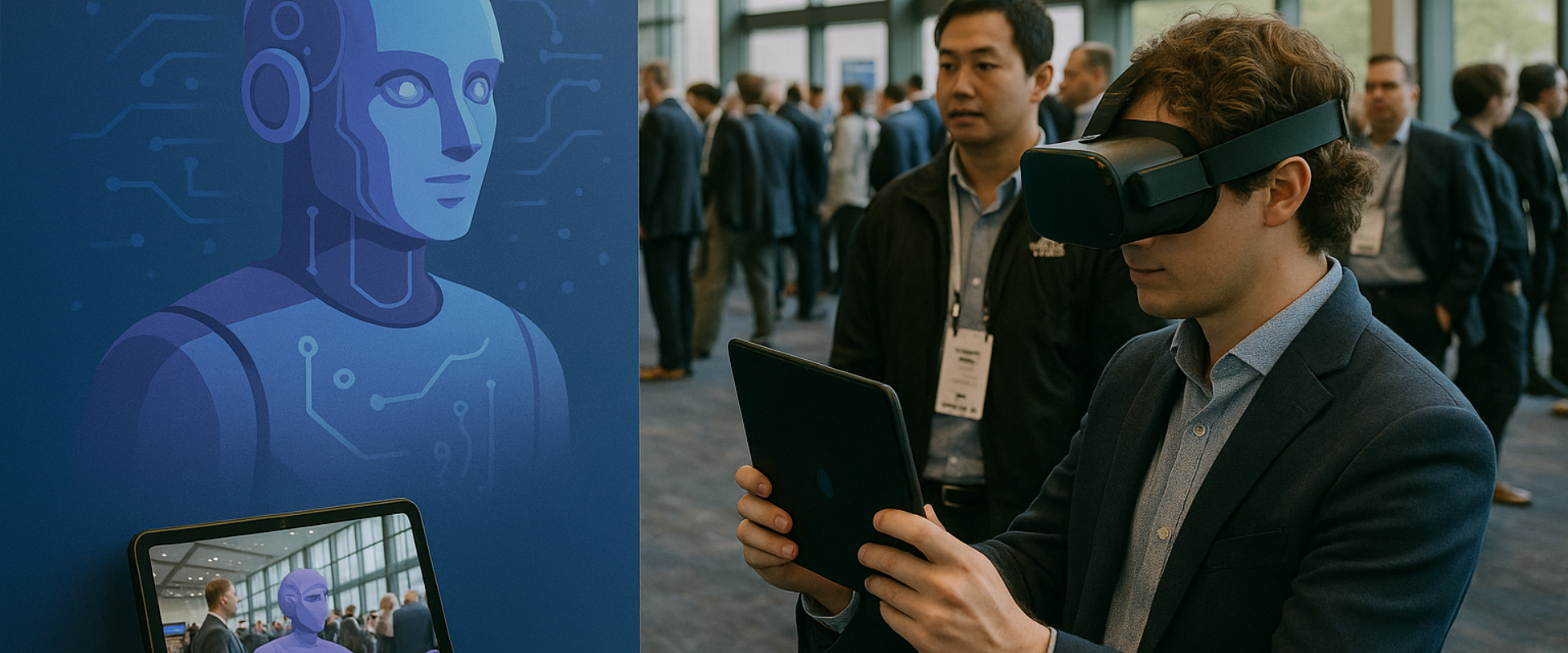
24 Apr AI and Augmented Reality: How to create immersive and interactive events
In the ever-evolving world of event planning and experiential marketing, two technologies are reshaping how we engage with audiences: Artificial Intelligence (AI) and Augmented Reality (AR). When used strategically, these tools can transform a traditional event into a fully immersive, interactive experience, leaving a lasting impression on attendees and enhancing brand engagement.
Why AI & AR matter in modern events:
AI and AR offer something that static presentations and conventional visuals cannot: real-time interaction and personalization. These technologies empower brands to tell stories, solve problems, and engage senses in ways that feel intuitive and unforgettable.
- AI enables dynamic personalization—analyzing user behavior, preferences, and reactions to create tailored experiences.
- AR blends the digital with the physical, overlaying 3D objects, information, or animations onto real-world environments through devices like smartphones, tablets, or AR glasses.
How AI enhances event experiences:
-
Smart chatbots & assistants
AI-powered virtual assistants can provide real-time help, schedule updates, or multilingual support during live events. -
Personalized content delivery
From curated agendas to tailored product recommendations, AI can adapt content based on user profiles and engagement history. -
Predictive analytics
Understand attendee interests and predict future behavior through data analysis, great for refining event strategy or lead generation. -
Facial recognition & sentiment analysis
These tools allow for real-time emotion tracking and crowd response, helping hosts fine-tune the atmosphere and presentation on the fly.
How AR Transforms Engagement:
Tools & platforms you can use:
AR: Spark AR (Meta), 8thWall, ZapWorks, Adobe Aero
AI: ChatGPT (OpenAI) for conversational experiences, IBM Watson for customer interaction, Synthesia for AI video avatars, Event AI tools like Grip or Swapcard
Real-world applications
- Luxury brands use AR mirrors at fashion events to allow virtual outfit try-ons.
- Tech conferences deploy AI to match attendees for networking based on shared interests.
- Museums and exhibits use AR to animate historical objects or artworks with dynamic storytelling.
- Corporate summits employ AI analytics for post-event reports and user feedback analysis.
The fusion of AI and AR is not just a trend—it’s a new era of event innovation. By leveraging these technologies, organizers can offer guests personalized, participatory, and multi-sensory experiences that stand out in a crowded digital world.
As these tools continue to evolve, the question is no longer if they should be used—but how creatively and meaningfully you’ll apply them to your next event.



No Comments